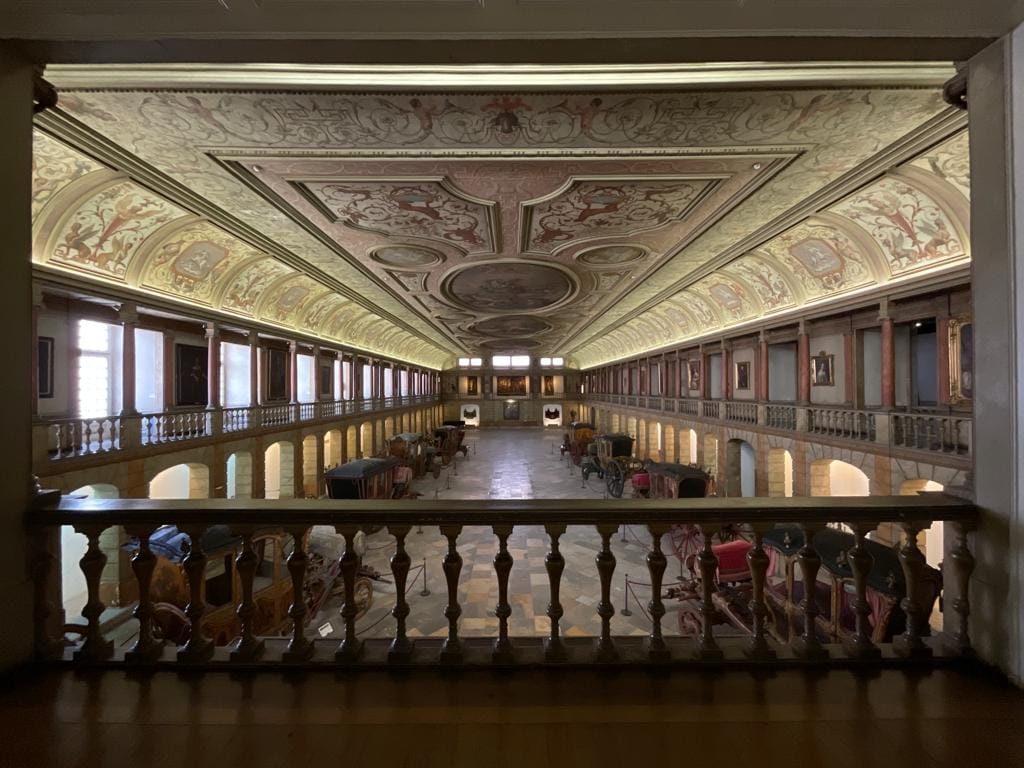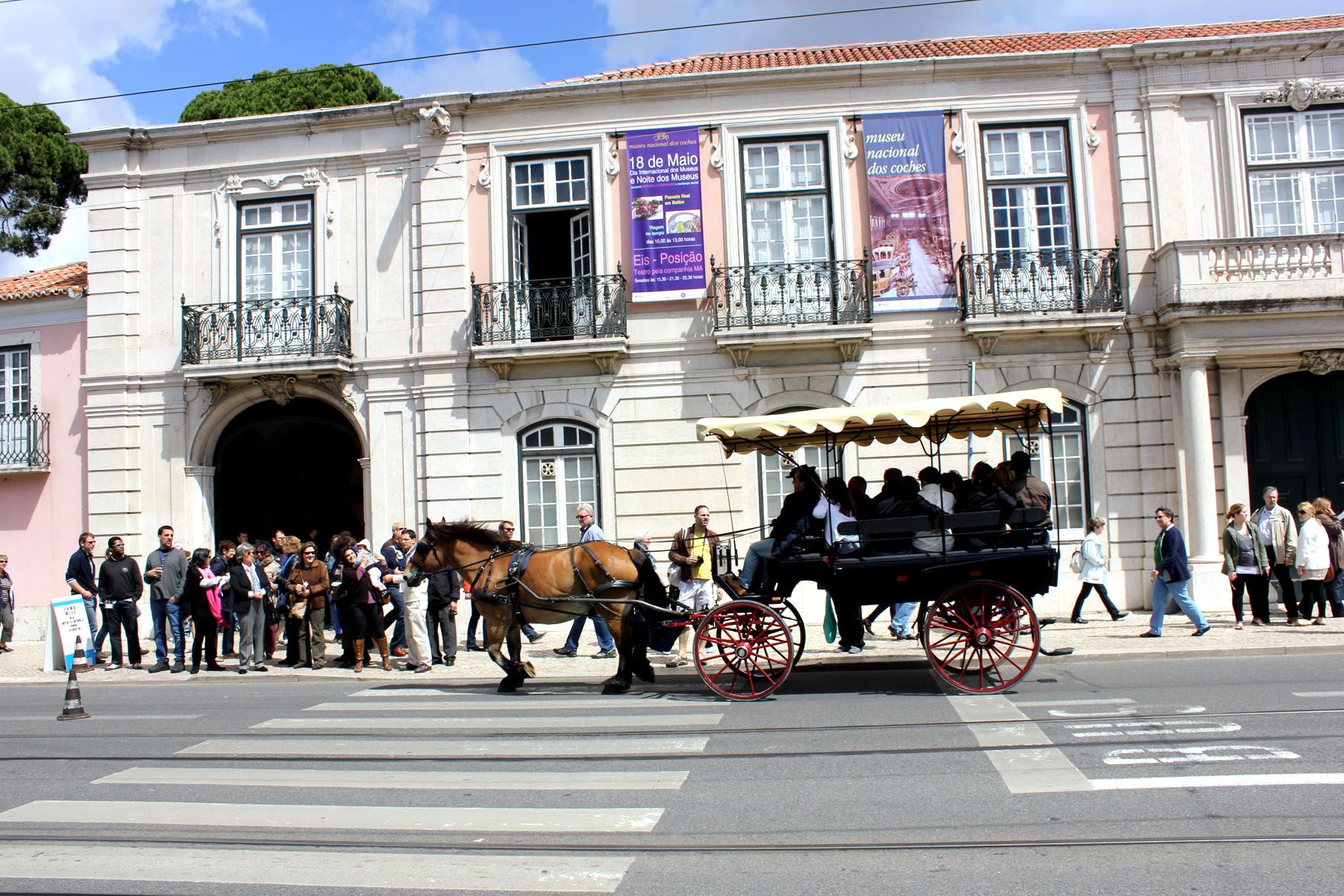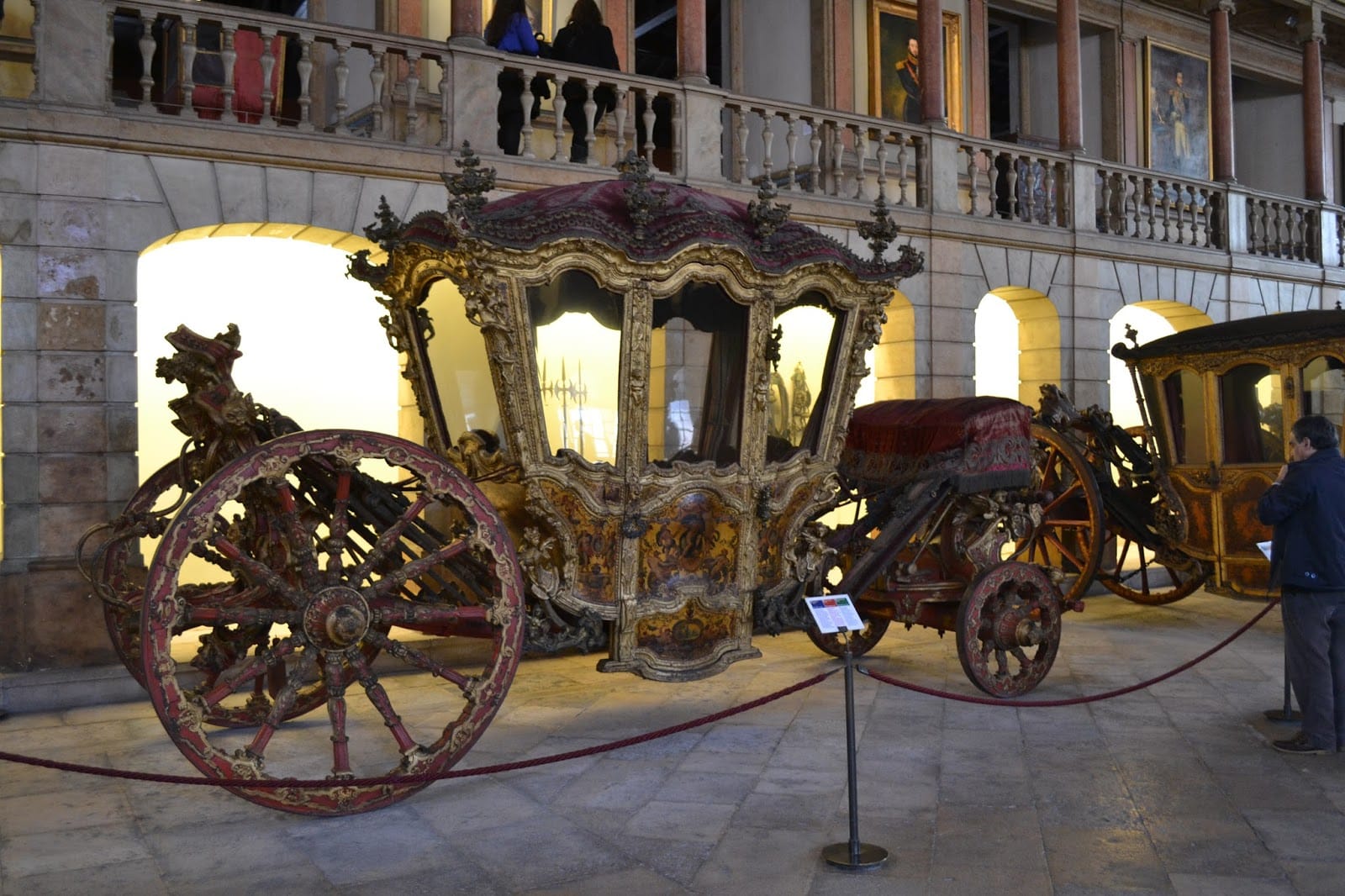On May 23, 1905, the Royal Coach Museum was inaugurated in Lisbon, commissioned by Queen Amélia d'Orléans e Bragança, a princess of France who married D. Carlos I, future king of Portugal, in 1886.
The location selected to install the first carriage museum in the world was the hall of the former Royal Riding School, built by the Italian architect Giacomo Azzolini in 1787. It was adapted to this new function by the court architect Rosendo Carvalheira with the collaboration of the painters José Malhoa and Conceição e Silva, who together achieved an almost perfect harmony between the space and the exhibition of the gala carts.
It was a huge success, but the lack of space was felt right from the start and the queen herself commissioned in 1906 a new project to expand the Museum to accommodate the remaining Royal House carts stored in the stables of several palaces.
After the establishment of the Republic on October 5, 1910, the Museum's collection was expanded with the arrival of a set of coaches and berlins from the extinct Royal House and carts from the Church's assets. In 1911, the museum was renamed the National Coach Museum. In 1944, a new hall designed by architect Raul Lino was inaugurated, accommodating more carts, but not the entire collection, for lack of enough room. In memory of the excellent work of protection and dissemination of this hippomobile heritage, started by Queen D. Amélia, the Royal Riding Hall displays a small number of coaches and berlins and a gallery with paintings of the royal family and a number of riding accessories.


